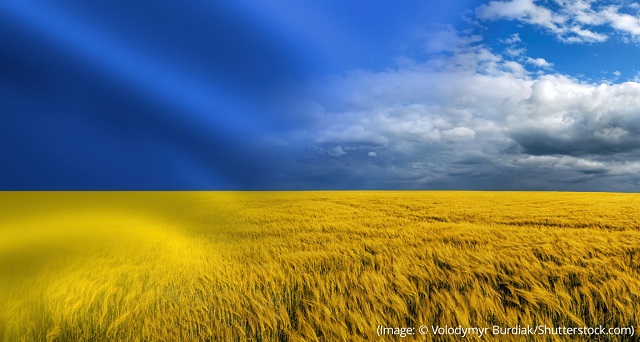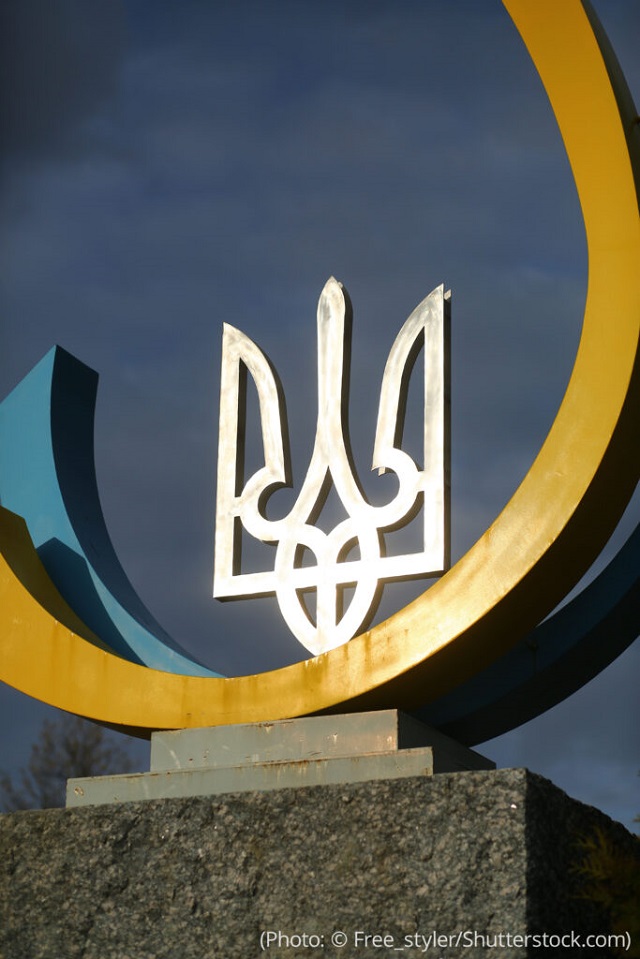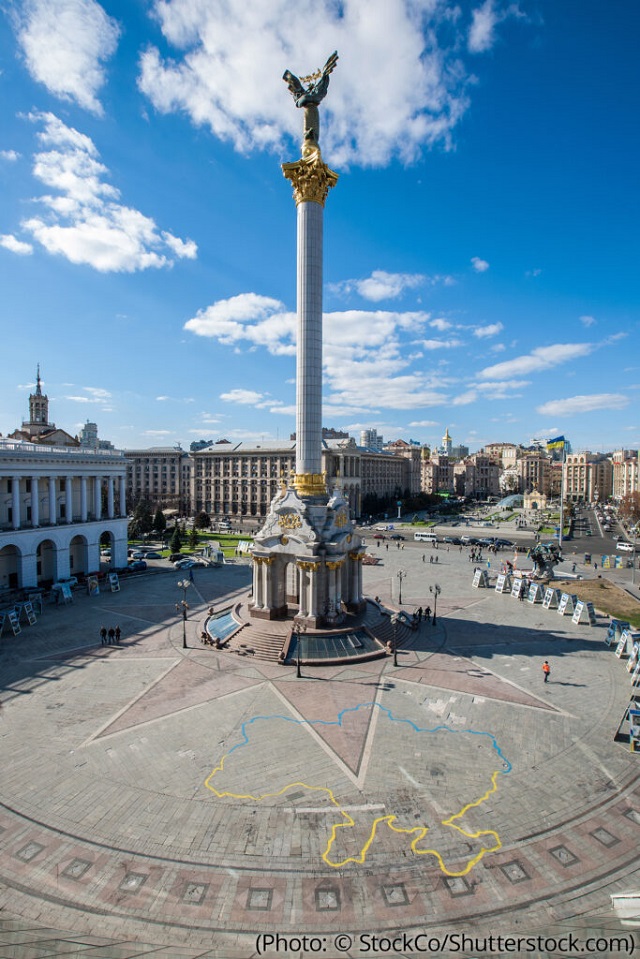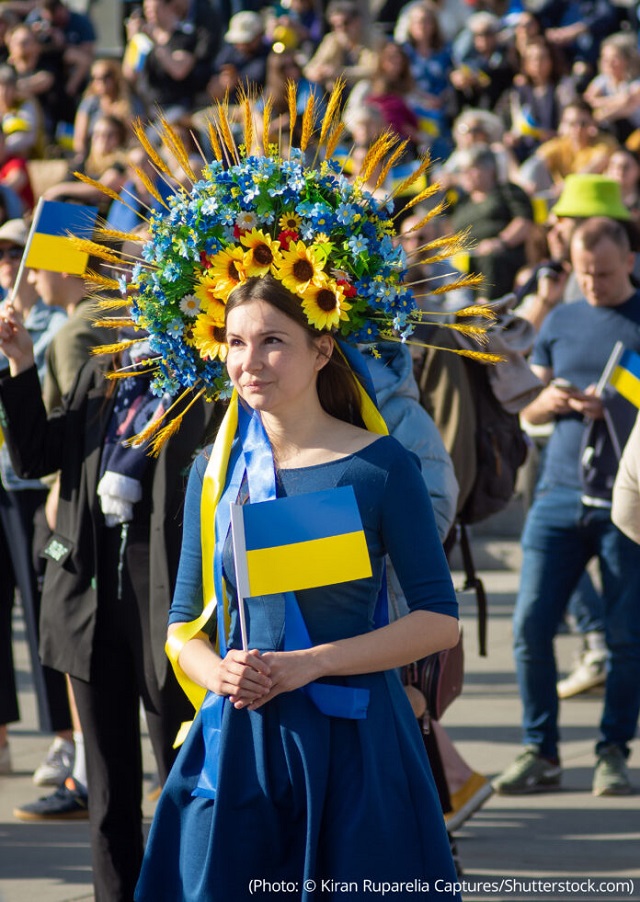Many of Ukraine’s most powerful symbols were born during the nation’s fight for independence throughout its history, and many are known worldwide.
Ukraine celebrates its national Independence Day August 24. On that day in 1991, Ukraine officially declared its independence from the Soviet Union and became a sovereign country. The U.S. established diplomatic relations with Ukraine shortly after and has been a firm supporter of its independence and sovereignty ever since.
Here’s a look at five symbols that represent Ukraine’s pride, sacrifice and unity.
The Ukrainian flag

(© Volodymyr Burdiak/Shutterstock.com)
Blue represents the sky while yellow represents wheat fields.
Following the collapse of czarist Russia in 1917, Ukraine used the flag during the 1917-1921 Ukrainian War of Independence.
Ukraine’s parliament designated the current flag as the national flag in 1992, six months after the independence vote.
Today Ukraine’s blue and yellow flag flies worldwide in solidarity with the nation’s fight to defend its sovereignty.
The trident

(© Free_styler/Shutterstock.com)
The trident, or “tryzub,” remains one of Ukraine’s most iconic symbols. Shaped like a spear with three prongs, its history goes back centuries. Volodymyr the Great, one of Ukraine’s most revered figures, included the symbol on coins when he ruled Kyiv from 980 to 1015.
During the 1917-1921 Ukrainian War of Independence, Ukraine used the trident as the nation’s coat of arms.
When Ukraine voted for independence in 1991, the country made the trident the coat of arms.
Earlier this month, Ukraine added the symbol to the Motherland monument in Kyiv, replacing a Soviet hammer and sickle. The government also plans to rename the statue “Mother Ukraine.”
Maidan Square

(© StockCo/Shutterstock.com)
Major peaceful protests that have changed Ukraine’s history have occurred several times on Independence Square, also known as the Maidan, located in central Kyiv.
“Modern Ukraine was made on Maidan,” wrote Peter Dickinson, editor of the Atlantic Council’s Ukraine’s Alert Service.
In 1990 the Revolution on Granite served as a forerunner to the 1991 vote for independence when students called for major political reforms. In 2004 the Orange Revolution demonstrators called for fair elections.
Then in 2013-2014 protesters launched the Euromaidan, or Revolution of Dignity, to call for a closer economic partnership with Europe and to peacefully protest the policies of former president Viktor Yanukovych.
The sunflower

(© Kiran Ruparelia Captures/Shutterstock.com)
The sunflower symbol carries power both economically and culturally. The flower contributes to the economy, as Ukraine is a major exporter of sunflower oil.
The flower often appears as a decorative logo on clothing. During celebrations, many women wear crowns shaped like sunflowers.
Citizens worldwide have carried sunflowers and worn crowns with the flower during demonstrations — such as this woman photographed in London — to express support for Ukraine following Russia’s 2022 invasion.
The letter “Ї”
People are reportedly drawing the Ukrainian letter “Ї”, which does not exist in the Russian alphabet, as a symbol of resistance in Russian-occupied Mariupol pic.twitter.com/p4D54Vf6Wj
— Business Ukraine mag (@Biz_Ukraine_Mag) September 7, 2022
If one letter can represent both defiance and hope in Ukraine, the capital letter “I” is it. While the Ukrainian and Russian languages are similar, the letter “Ї” (with two dots) is found only in Ukrainian.
Residents of Mariupol used the letter to express opposition against Russia’s military presence by painting it in parks and public squares.
A poem by Ivan Malkovych about a candle shaped like the Ukrainian “Ї” speaks to the nation’s children and its future:
Let it be possible and not the most essential
but you are a child
called to protect with your tiny palms
a tiny candle of the letter “Ї”
The original article is here on ShareAmerica.







COMMENTS0
LEAVE A COMMENT
TOP